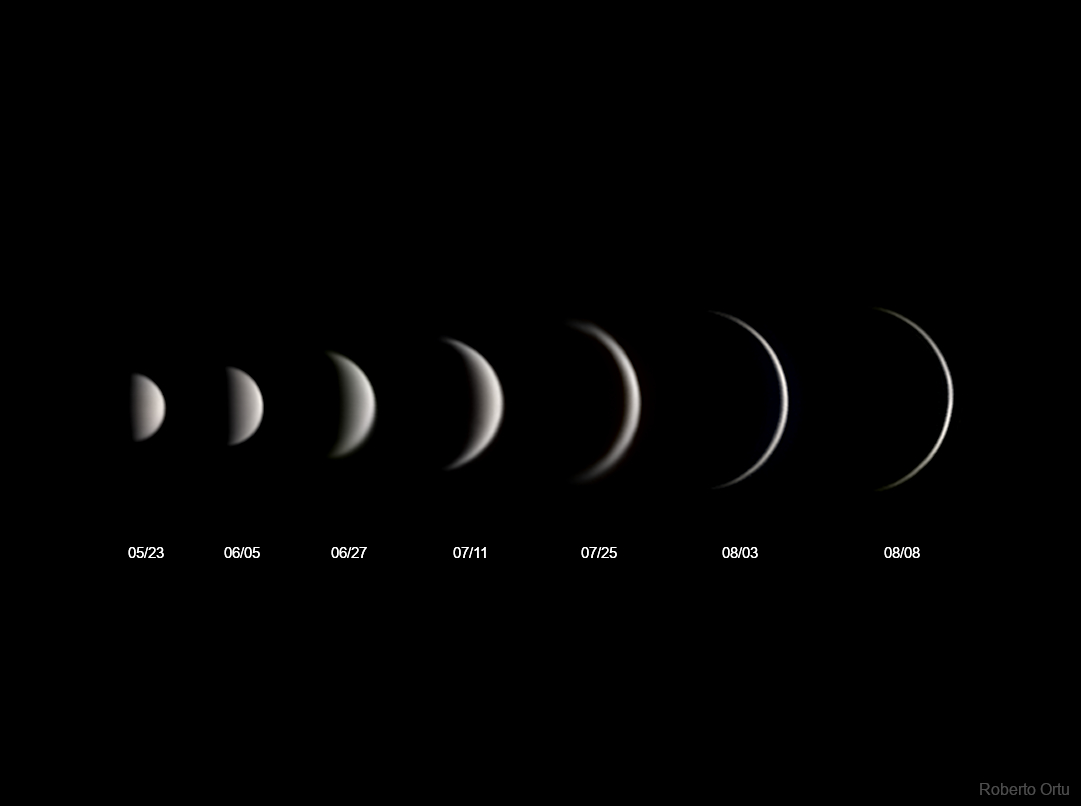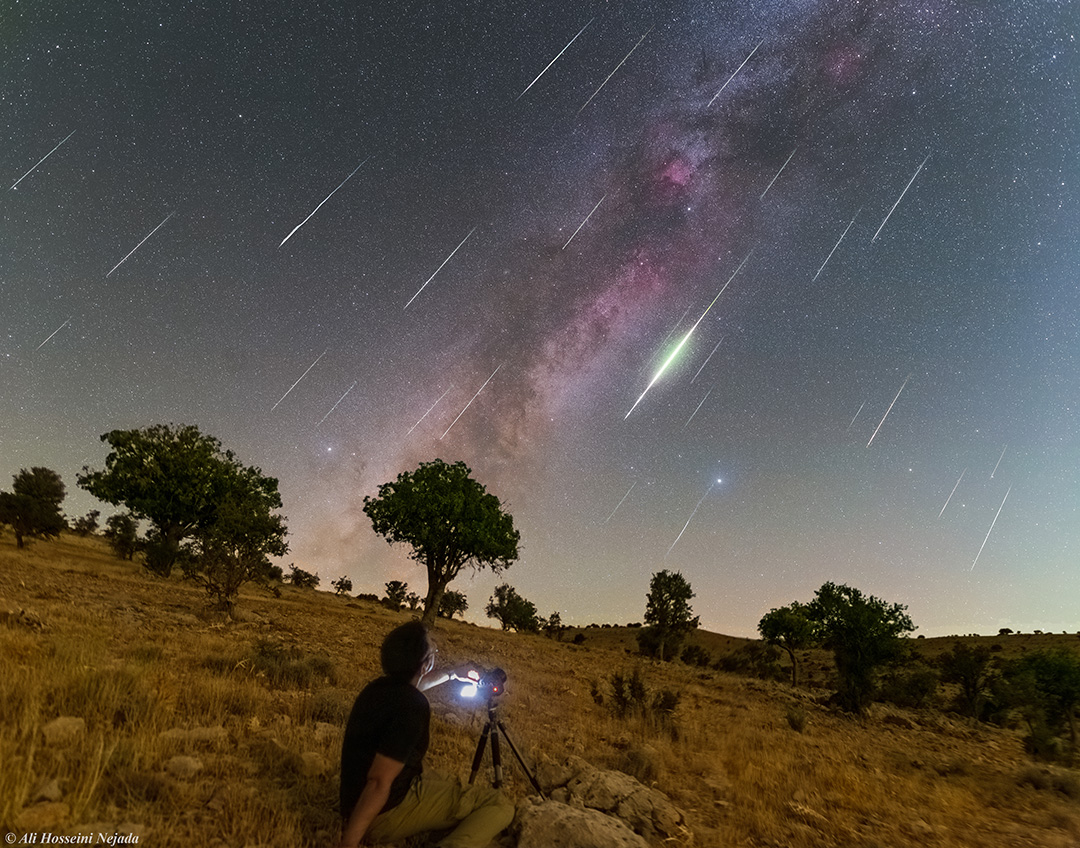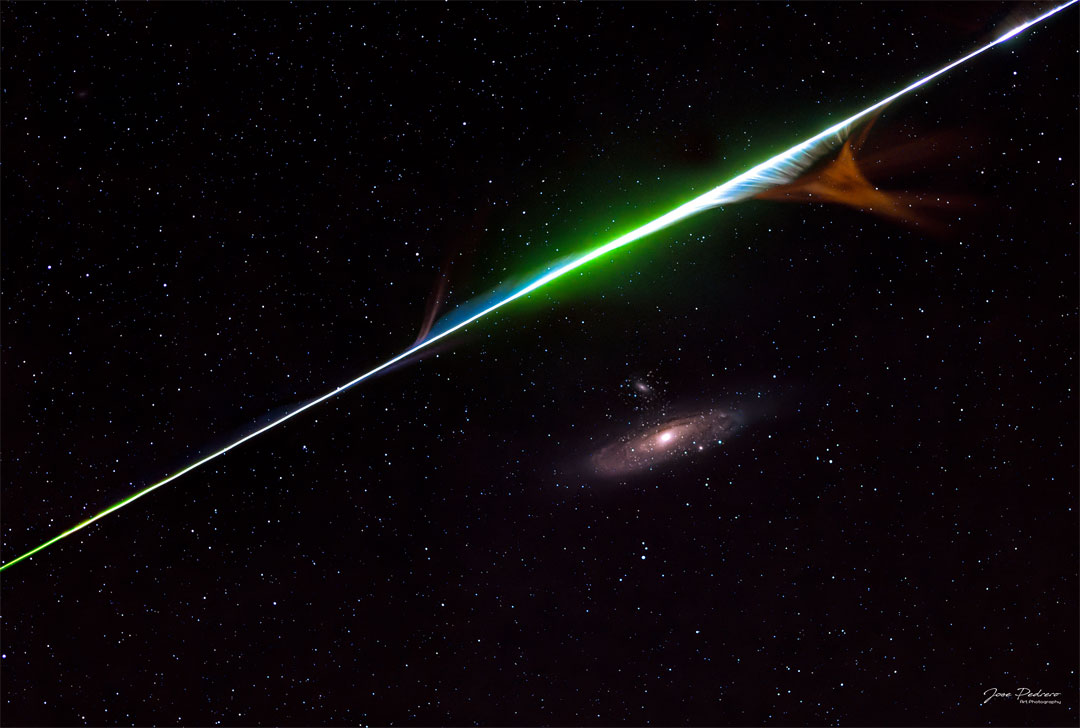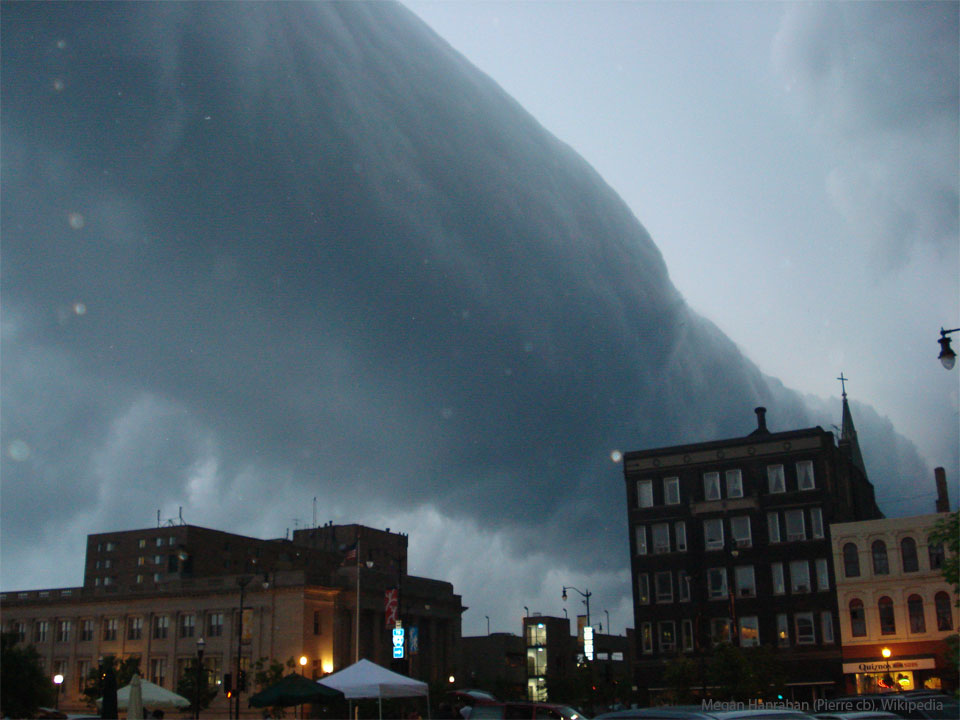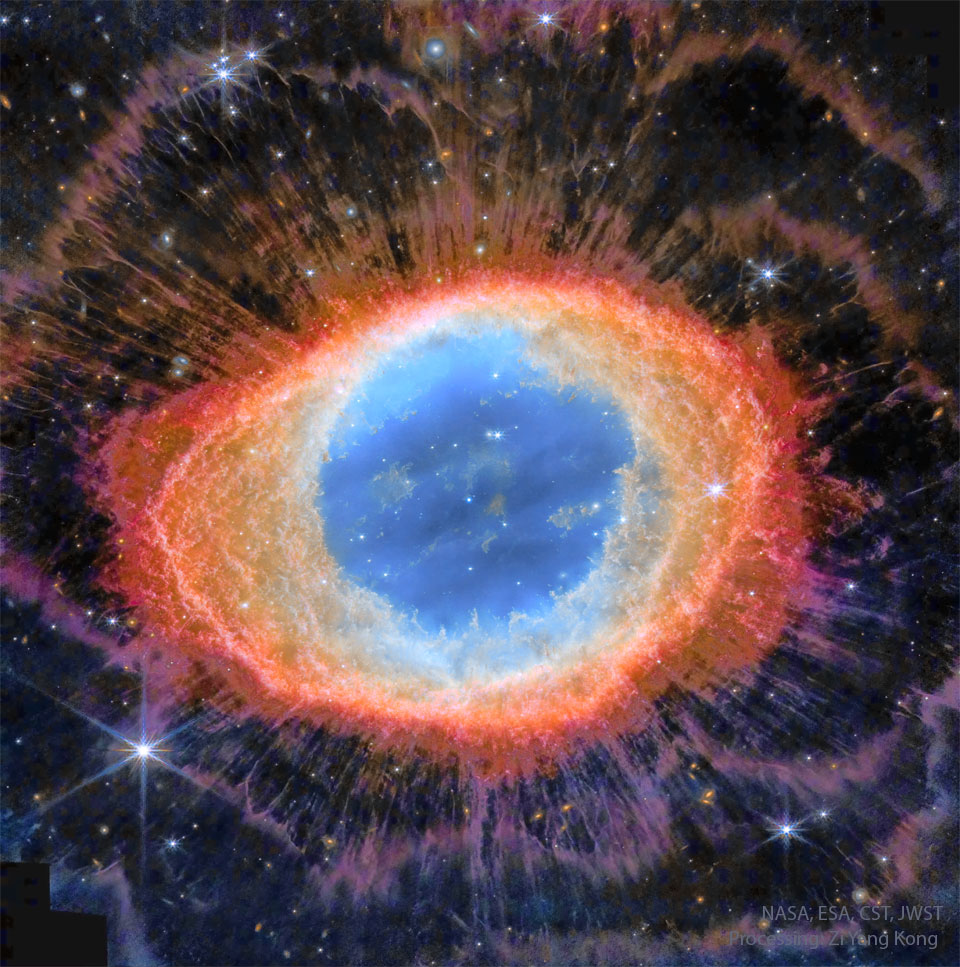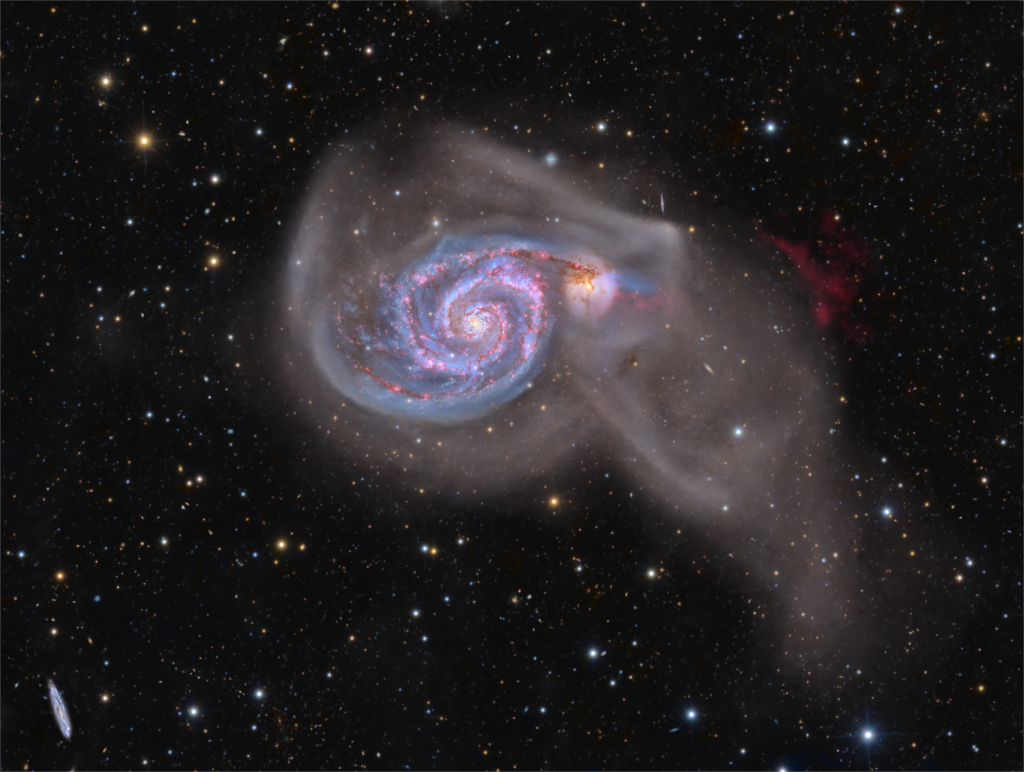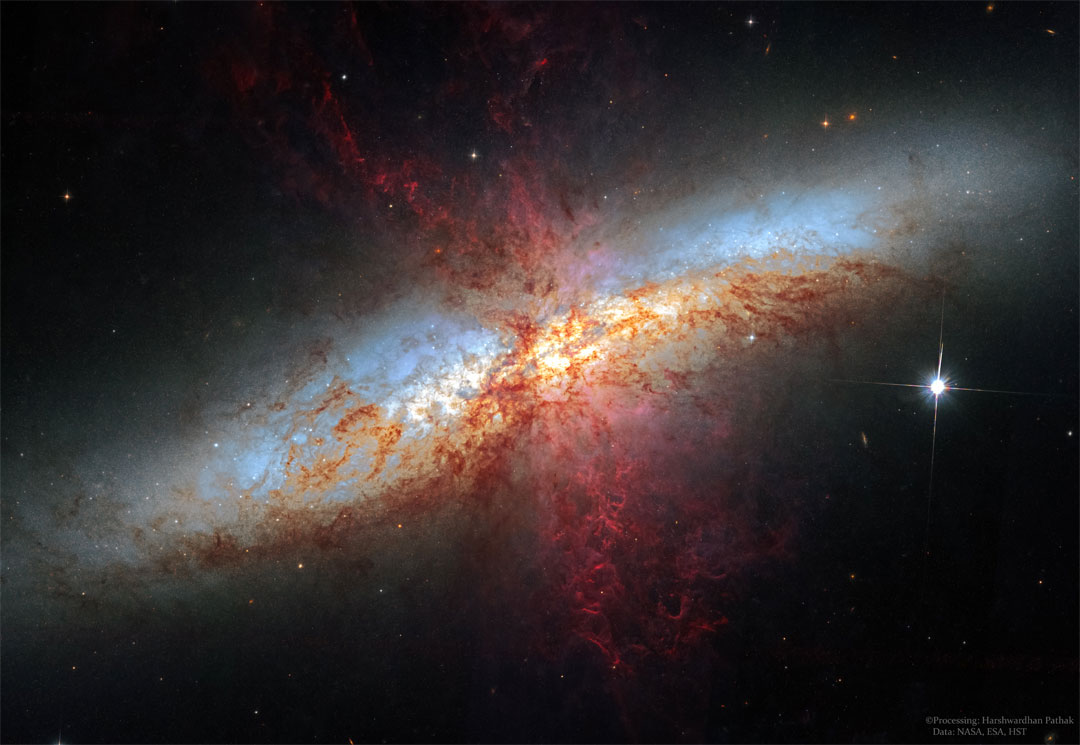Nombre total de pages vues
30/08/2023
ASTRONOMIE - Les plus beaux astres de la voie lactée - Mars
© Nasa, Wikimedia Commons, DP
VEGETAUX - Cyprès dans la brume - Cyprès chauve - Texas - USA

ASTRONOMY - Full Moons of August
2023 August 30
Image Credit & Copyright: Gianni Tumino
Explanation: Near perigee, the closest point in its almost moonthly orbit, a Full Moon rose as the Sun set on August 1. Its brighter than average lunar disk was captured in this dramatic moonrise sequence over dense cloud banks along the eastern horizon from Ragusa, Sicily. Illuminating night skies around planet Earth it was the second supermoon of 2023. Yet again near perigee, the third supermoon of 2023 will also shine on an August night. Rising as the Sun sets tonight this second Full Moon in August will be known to some as a Blue Moon, even though scattered sunlight gives the lunar disk a reddened hue. Defined as the second full moon in a calendar month, blue moons occur only once every 2 or 3 years. That's because lunar phases take 29.5 days, almost a calendar month, to go through a complete cycle. Tonight an August Blue Moon will find itself beside bright planet Saturn.
29/08/2023
ASTRONOMY - Unusual Spiral Galaxy M66 from Webb
2023 August 29
Image Credit: NASA, ESA, CSA, JWST; Processing: Brian Tomlinson
Explanation: Why isn't spiral galaxy M66 symmetric? Usually, density waves of gas, dust, and newly formed stars circle a spiral galaxy's center and create a nearly symmetric galaxy. The differences between M66's spiral arms and the apparent displacement of its nucleus are all likely caused by previous close interactions and the tidal gravitational pulls of nearby galaxy neighbors M65 and NGC 3628. The galaxy, featured here in infrared light taken by the James Webb Space Telescope, spans about 100,000 light years, lies about 35 million light years distant, and is the largest galaxy in a group known as the Leo Triplet. Like many spiral galaxies, the long and intricate dust lanes of M66 are seen intertwined with the bright stars and intergalactic dust that follow the spiral arms.
28/08/2023
ASTRONOMY - Star Formation in the Pacman Nebula
2023 August 28
Image Credit & Copyright: Craig Stocks
Explanation: Look through the cosmic cloud cataloged as NGC 281 and you might miss the stars of open cluster IC 1590. Formed within the nebula, that cluster's young, massive stars ultimately power the pervasive nebular glow. The eye-catching shapes looming in the featured portrait of NGC 281 are sculpted dusty columns and dense Bok globules seen in silhouette, eroded by intense, energetic winds and radiation from the hot cluster stars. If they survive long enough, the dusty structures could also be sites of future star formation. Playfully called the Pacman Nebula because of its overall shape, NGC 281 is about 10,000 light-years away in the constellation Cassiopeia. This sharp composite image was made through narrow-band filters. It combines emission from the nebula's hydrogen and oxygen atoms to synthesize red, green, and blue colors. The scene spans well over 80 light-years at the estimated distance of NGC 281.
27/08/2023
ASTRONOMY - Three Galaxies and a Comet
2023 August 27
Credit & Copyright: Miloslav Druckmuller (Brno University of Technology)
Explanation: Diffuse starlight and dark nebulae along the southern Milky Way arc over the horizon and sprawl diagonally through this gorgeous nightscape. The breath-taking mosaic spans a wide 100 degrees, with the rugged terrain of the Patagonia, Argentina region in the foreground. Along with the insider's view of our own galaxy, the image features our outside perspective on two irregular satellite galaxies - the Large and Small Magellanic Clouds. The scene also captures the broad tail and bright coma of Comet McNaught, the Great Comet of 2007.
26/08/2023
AERONAUTIQUE - LES INVENTIONS QUI N'ONT JAMAIS VOLE - L'Ariel
ASTRONOMY - Crescents of Venus
2023 August 26
Image Credit & Copyright: Roberto Ortu
Explanation: Just as the Moon goes through phases, Venus' visible sunlit hemisphere waxes and wanes. This sequence of telescopic images illustrates the steady changes for Venus during its recent 2023 apparition as our evening star. Gliding along its interior orbit between Earth and Sun, Venus grows larger during that period because it is approaching planet Earth. Its crescent narrows though, as the inner planet swings closer to our line-of-sight to the Sun. Closest to the Earth-Sun line but passing about 8 degrees south of the Sun, on August 13 Venus reached its (non-judgmental) inferior conjunction. And now Venus shines above the eastern horizon in predawn skies, completing its transition to planet Earth's morning star. On August 21, NASA's Parker Solar Probe completed its sixth gravity assist flyby of Venus, using the encounter to maneuver the probe toward its closest approach yet to the Sun.
25/08/2023
METEO EXTREME - Fort risque de "Medicane" en Mediterranée

ASTRONOMY - A Season of Saturn
2023 August 25
Image Credit & Copyright: Andy Casely
Explanation: Ringed planet Saturn will be at its 2023 opposition, opposite the Sun in Earth's skies, on August 27. While that puts the sixth planet from the Sun at its brightest and well-placed for viewing, its beautiful ring system isn't visible to the unaided eye. Still, this sequence of telescopic images taken a year apart over the last six years follows both Saturn and rings as seen from inner planet Earth. The gas giant's ring plane tilts from most open in 2018 to approaching edge-on in 2023 (top to bottom). That's summer to nearly the autumn equinox for Saturn's northern hemisphere. In the sharp planetary portraits, Saturn's northern hexagon and a large storm system are clearly visible in 2018. In 2023, ice moon Tethys is transiting, casting its shadow across southern hemisphere cloud bands, while Saturn's cold blue south pole is emerging from almost a decade of winter darkness.
24/08/2023
METEO EXTREME - Nuage impressionnant dans le Nord de la France
ASTRONOMY - Meteors along the Milky Way
2023 August 24
Image Credit & Copyright: Ali Hosseini Nezhad
Explanation: Under dark and mostly moonless night skies, many denizens of planet Earth were able to watch this year's Perseid meteor shower. Seen from a grassy hillside from Shiraz, Iran these Perseid meteors streak along the northern summer Milky Way before dawn on Sunday, August 13. Frames used to construct the composited image were captured near the active annual meteor shower's peak between 02:00 AM and 04:30 AM local time. Not in this night skyscape, the shower's radiant in the heroic constellation Perseus is far above the camera's field of view. But fans of northern summer nights can still spot a familiar asterism. Formed by bright stars Deneb, Vega, and Altair, the Summer Triangle spans the luminous band of the Milky Way.
23/08/2023
ASTRONOMY - The Meteor and the Galaxy
2023 August 23
Credit & Copyright: Jose Pedrero
Explanation: It came from outer space. It -- in this case a sand-sized bit of a comet nucleus -- was likely ejected many years ago from Sun-orbiting Comet Swift-Tuttle, but then continued to orbit the Sun alone. When the Earth crossed through this orbit, the piece of comet debris impacted the atmosphere of our fair planet and was seen as a meteor. This meteor deteriorated, causing gases to be emitted that glowed in colors emitted by its component elements. The featured image was taken last week from Castilla La Mancha, Spain, during the peak night of the Perseids meteor shower. The picturesque meteor streak happened to appear in the only one of 50 frames that also included the Andromeda galaxy. Stars dot the frame, each much further away than the meteor. Compared to the stars, the Andromeda galaxy (M31) is, again, much further away.
22/08/2023
ASTRONOMY - M16: Eagle Nebula Deep Field
2023 May 15
Image Credit & Copyright: Gianni Lacroce
Explanation: From afar, the whole thing looks like an eagle. A closer look at the Eagle Nebula, however, shows the bright region is actually a window into the center of a larger dark shell of dust. Through this window, a brightly-lit workshop appears where a whole open cluster of stars is being formed. In this cavity, tall pillars and round globules of dark dust and cold molecular gas remain where stars are still forming. Already visible are several young bright blue stars whose light and winds are burning away and pushing back the remaining filaments and walls of gas and dust. The Eagle emission nebula, tagged M16, lies about 6500 light years away, spans about 20 light-years, and is visible with binoculars toward the constellation of the Serpent (Serpens). This picture involved long and deep exposures and combined three specific emitted colors emitted by sulfur (colored as yellow), hydrogen (red), and oxygen (blue).
21/08/2023
ASTRONOMY - Moons Across Jupiter
2023 June 13
Image Credit: NASA; ESA, JPL, Cassini Imaging Team, SSI; Processing: Kevin M. Gill
Explanation: Jupiter's moons circle Jupiter. The featured video depicts Europa and Io, two of Jupiter's largest moons, crossing in front of the grand planet's Great Red Spot, the largest known storm system in our Solar System. The video was composed from images taken by the robotic Cassini spacecraft as it passed Jupiter in 2000, on its way to Saturn. The two moons visible are volcanic Io, in the distance, and icy Europa. In the time-lapse video, Europa appears to overtake Io, which is odd because Io is closer to Jupiter and moves faster. The explanation is that the motion of the fast Cassini spacecraft changes the camera location significantly during imaging. Jupiter is currently being visited by NASA's robotic Juno spacecraft, while ESA's Jupiter Icy Moons Explorer (JUICE), launched in April, is enroute.
20/08/2023
A Roll Cloud Over Wisconsin
2023 August 20
Credit: Megan Hanrahan (Pierre cb), Wikipedia
Explanation: What kind of cloud is this? A type of arcus cloud called a roll cloud. These rare long clouds may form near advancing cold fronts. In particular, a downdraft from an advancing storm front can cause moist warm air to rise, cool below its dew point, and so form a cloud. When this happens uniformly along an extended front, a roll cloud may form. Roll clouds may actually have air circulating along the long horizontal axis of the cloud. A roll cloud is not thought to be able to morph into a tornado. Unlike a similar shelf cloud, a roll cloud is completely detached from their parent cumulonimbus cloud. Pictured here, a roll cloud extends far into the distance as a storm approaches in 2007 in Racine, Wisconsin, USA.
19/08/2023
PHOTOGRAPHIE ANIMAUX - Ourang-Outan grimpeur
ASTRONOMY - Monster Solar Prominence
2023 August 1
Image Credit & Copyright: Mike Wenz
Explanation: The monsters that live on the Sun are not like us. They are larger than the Earth and made of gas hotter than in any teapot. They have no eyes, but at times, many tentacles. They float. Usually, they slowly change shape and just fade back onto the Sun over about a month. Sometimes, though, they suddenly explode and unleash energetic particles into the Solar System that can attack the Earth. Pictured is a huge solar prominence imaged almost two weeks ago in the light of hydrogen. Captured by a small telescope in Gilbert, Arizona, USA, the monsteresque plume of gas was held aloft by the ever-present but ever-changing magnetic field near the surface of the Sun. Our active Sun continues to show an unusually high number of prominences, filaments, sunspots, and large active regions as solar maximum approaches in 2025.
18/08/2023
ASTRONOMY - The Sombrero Galaxy in Infrared
2023 August 13
Credit: R. Kennicutt (Steward Obs.) et al., SSC, JPL, Caltech, NASA
Explanation: This floating ring is the size of a galaxy. In fact, it is a galaxy -- or at least part of one: the photogenic Sombrero Galaxy, one of the largest galaxies in the nearby Virgo Cluster of Galaxies. The dark band of dust that obscures the mid-section of the Sombrero Galaxy in optical light actually glows brightly in infrared light. The featured image, digitally sharpened, shows the infrared glow, recently recorded by the orbiting Spitzer Space Telescope, superposed in false-color on an existing image taken by NASA's Hubble Space Telescope in visible light. The Sombrero Galaxy, also known as M104, spans about 50,000 light years across and lies 28 million light years away. M104 can be seen with a small telescope in the direction of the constellation Virgo.
ASTRONOMY - A Triply Glowing Night Sky over Iceland
2023 August 15
Credit & Copyright: Wioleta Gorecka; Text: Natalia Lewandowska (SUNY Oswego)
Explanation: The Sun is not the quiet place it seems. It expels an unsteady stream of energetic electrons and protons known as the solar wind. These charged particles deform the Earth's magnetosphere, change paths, and collide with atoms in Earth's atmosphere, causing the generation of light in auroras like that visible in green in the image left. Earth itself is also geologically active and covered with volcanoes. For example, Fagradalsfjall volcano in Iceland, seen emitting hot gas in orange near the image center. Iceland is one of the most geologically active places on Earth. On the far right is the Svartsengi geothermal power plant which creates the famous human-made Blue Lagoon, shown emitting white gas plumes. The featured composition therefore highlights three different sky phenomena, including both natural and human-made phenomena.
17/08/2023
ASTRONOMY - A Cosmic Zoo in Cepheus
2023 August 17
Image Credit & Copyright: Yann Sainty
Explanation: Sprawling emission nebulae IC 1396 and Sh2-129 mix glowing interstellar gas and dark dust clouds in this nearly 12 degree wide field of view toward the northern constellation Cepheus the King. Energized by its central star IC 1396 (left), is hundreds of light-years across and some 3,000 light-years distant. The nebula's intriguing dark shapes include a winding dark cloud popularly known as the Elephant's Trunk below and right of center. Tens of light-years long, it holds the raw material for star formation and is known to hide protostars within. Located a similar distance from planet Earth, the bright knots and swept back ridges of emission of Sh2-129 on the right suggest its popular name, the Flying Bat Nebula. Within the Flying Bat, the most recently recognized addition to this royal cosmic zoo is the faint bluish emission from Ou4, the Giant Squid Nebula. Near the lower right edge of the frame, the suggestive dark marking on the sky cataloged as Barnard 150 is also known as the dark Seahorse Nebula.
14/08/2023
ASTRONOMY - The Ring Nebula from Webb
2023 August 14
Credit: NASA, ESA, CSA, JWST; Processing: Zi Yang Kong
Explanation: The Ring Nebula (M57), is more complicated than it appears through a small telescope. The easily visible central ring is about one light-year across, but this remarkable exposure by the James Webb Space Telescope explores this popular nebula with a deep exposure in infrared light. Strings of gas, like eyelashes around a cosmic eye, become evident around the Ring in this digitally enhanced featured image in assigned colors. These long filaments may be caused by shadowing of knots of dense gas in the ring from energetic light emitted within. The Ring Nebula is an elongated planetary nebula, a type of gas cloud created when a Sun-like star evolves to throw off its outer atmosphere to become a white dwarf star. The central oval in the Ring Nebula lies about 2,500 light-years away toward the musical constellation Lyra.
12/08/2023
ASTRONOMY - Meteor Shower: Perseids from Perseus
2023 August 9
Credit & Copyright: Petr Horálek / Institute of Physics in Opava
Explanation: This is a good week to see meteors. Comet dust will rain down on planet Earth, streaking through dark skies during peak nights of the annual Perseid Meteor Shower. The featured composite image was taken during the 2018 Perseids from the Poloniny Dark Sky Park in Slovakia. The dome of the observatory in the foreground is on the grounds of Kolonica Observatory. Although the comet dust particles travel parallel to each other, the resulting shower meteors clearly seem to radiate from a single point on the sky in the eponymous constellation Perseus. The radiant effect is due to perspective, as the parallel tracks appear to converge at a distance, like train tracks. The Perseid Meteor Shower is expected to reach its highest peak on Saturday after midnight. Since a crescent Moon will rise only very late that night, cloudless skies will be darker than usual, making a high number of faint meteors potentially visible this year.
11/08/2023
ASTRONOMY - Messier 51 in 255 Hours
2023 August 11
Image Credit & Copyright: The Deep Sky Collective - Carl Björk,
Thomas Bähnck, Sebastian Donoso, Jake Gentillon, Antoine and Dalia Grelin, Stephen Guberski, Richard Hall,
Tino Heuberger, Jason Jacks, Paul Kent, Brian Meyers, William Ostling, Nicolas Puig, Tim Schaeffer, Felix Schöfbänker, Mikhail Vasilev
Explanation: An intriguing pair of interacting galaxies, M51 is the 51st entry in Charles Messier's famous catalog. Perhaps the original spiral nebula, the large galaxy with whirlpool-like spiral structure seen nearly face-on is also cataloged as NGC 5194. Its spiral arms and dust lanes sweep in front of a companion galaxy (right), NGC 5195. Some 31 million light-years distant, within the boundaries of the well-trained constellation Canes Venatici, M51 looks faint and fuzzy to the eye in direct telescopic views. But this remarkably deep image shows off stunning details of the galaxy pair's striking colors and extensive tidal debris. A collaboration of astro-imagers using telescopes on planet Earth combined over 10 days of exposure time to create this definitive galaxy portrait of M51. The image includes 118 hours of narrowband data that also reveals a vast glowing cloud of reddish ionized hydrogen gas discovered in the M51 system.
10/08/2023
GEMMOLOGIE - L’orthose, un minéral extraterrestre
ASTRONOMIE - Une boule de feu a enflammé le ciel de l'Australie et ce n'était pas une météorite !
ART FRACTAL - Fractale artificielle de Mandelbrot
ASTRONOMY - Five Meters over Mars
2023 August 10
Image Credit: NASA, JPL-Caltech, Ingenuity
Explanation: On mission sol 872 (Earth date August 3) Ingenuity snapped this sharp image on its 54th flight above the surface of the Red Planet. During the flight the Mars Helicopter hovered about 5 meters, or just over 16 feet, above the Jezero crater floor. Tips of Ingenuity's landing legs peek over the left and right edges in the camera's field of view. Tracks visible near the upper right corner lead to the Perseverance Mars Rover, seen looking on from a distance at the top right edge of the frame. Planned as a brief "pop-up" flight, Ingenuity's 54th flight lasted less than 25 seconds. It followed Ingenuity's 53rd flight made on July 22 that resulted in an unscheduled landing.
AERONAUTIQUE - INVENTIONS QUI N'ONT JAMAIS VOLE - L'ornithoptère
07/08/2023
ASTRONOMY - The Pelican Nebula in Gas, Dust, and Stars
2023 August 7
Credit & Copyright: Abe Jones
Explanation: The Pelican Nebula is slowly being transformed. IC 5070 (the official designation) is divided from the larger North America Nebula by a molecular cloud filled with dark dust. The Pelican, however, receives much study because it is a particularly active mix of star formation and evolving gas clouds. The featured picture was produced in three specific colors -- light emitted by sulfur, hydrogen, and oxygen -- that can help us to better understand these interactions. The light from young energetic stars is slowly transforming the cold gas to hot gas, with the advancing boundary between the two, known as an ionization front, visible in bright orange on the right. Particularly dense tentacles of cold gas remain. Millions of years from now, the Pelican nebula, bounded by dark nebula LDN 935, might no longer be known as the Pelican, as the balance and placement of stars and gas will surely leave something that appears completely different.
06/08/2023
MACRO PHOTOGRAPHIE - l’anémone en mouvement

ASTRONOMY - SN 1006: A Supernova Ribbon from Hubble
2023 August 6
Credit: NASA, ESA, Hubble Heritage (STScI/AURA); Acknowledgement: W. Blair et al. (JHU)
Explanation: What created this unusual space ribbon? The answer: one of the most violent explosions ever witnessed by ancient humans. Back in the year 1006 AD, light reached Earth from a stellar explosion in the constellation of the Wolf (Lupus), creating a "guest star" in the sky that appeared brighter than Venus and lasted for over two years. The supernova, now cataloged at SN 1006, occurred about 7,000 light years away and has left a large remnant that continues to expand and fade today. Pictured here is a small part of that expanding supernova remnant dominated by a thin and outwardly moving shock front that heats and ionizes surrounding ambient gas. The supernova remnant SN 1006 now has a diameter of nearly 60 light years.
04/08/2023
ASTRONOMY - Moonrays of August
2023 August 4
Image Credit & Copyright: Gianni Tumino
Explanation: A Full Moon rose as the Sun set on August 1. Near perigee, the closest point in its almost moonthly orbit, the brighter than average lunar disk illuminated night skies around planet Earth as the second supermoon of 2023. Seen here above Ragusa, Sicily, cloud banks cast diverging shadows through the supermoonlit skies, creating dramatic lunar crepuscular rays. The next Full Moon in 2023 will also shine on an August night. Rising as the Sun sets on August 30/31, this second Full Moon in a month is known as a Blue Moon. Blue moons occur only once every 2 or 3 years because lunar phases take almost a calendar month (29.5 days) to go through a complete cycle. But August's Blue Moon will also be near perigee, the third supermoon in 2023.
02/08/2023
ASTRONOMY - M82: Galaxy with a Supergalactic Wind
2023 August 2
NASA, ESA, Hubble; Processing & Copyright: Harshwardhan Pathak
Explanation: Why is the Cigar Galaxy billowing red smoke? M82, as this starburst galaxy is also known, was stirred up by a recent pass near large spiral galaxy M81. This doesn't fully explain the source of the red-glowing outwardly expanding gas and dust, however. Evidence indicates that this gas and dust is being driven out by the combined emerging particle winds of many stars, together creating a galactic superwind. The dust particles are thought to originate in M82's interstellar medium and are actually similar in size to particles in cigar smoke. The featured photographic mosaic highlights a specific color of red light strongly emitted by ionized hydrogen gas, showing detailed filaments of this gas and dust. The filaments extend for over 10,000 light years. The 12-million light-year distant Cigar Galaxy is the brightest galaxy in the sky in infrared light and can be seen in visible light with a small telescope towards the constellation of the Great Bear (Ursa Major).
ASTRONOMY - Juno Flyby of Ganymede and Jupiter
2025 December 14 Juno Flyby of Ganymede and Jupiter Video Credit: NASA , JPL-Caltech , SWRI , MSSS ; Animation: Koji Kuramura , Geral...

-
2022 September 26 All the Water on Planet Earth Illustration Credit: Jack Cook, Adam Nieman, Woods Hole Oceanographic Institution ; Data ...
-
2025 May 11 The Surface of Venus from Venera 14 Image Credit: Soviet Planetary Exploration Program , Venera 14 ; Processing & Copyri...






